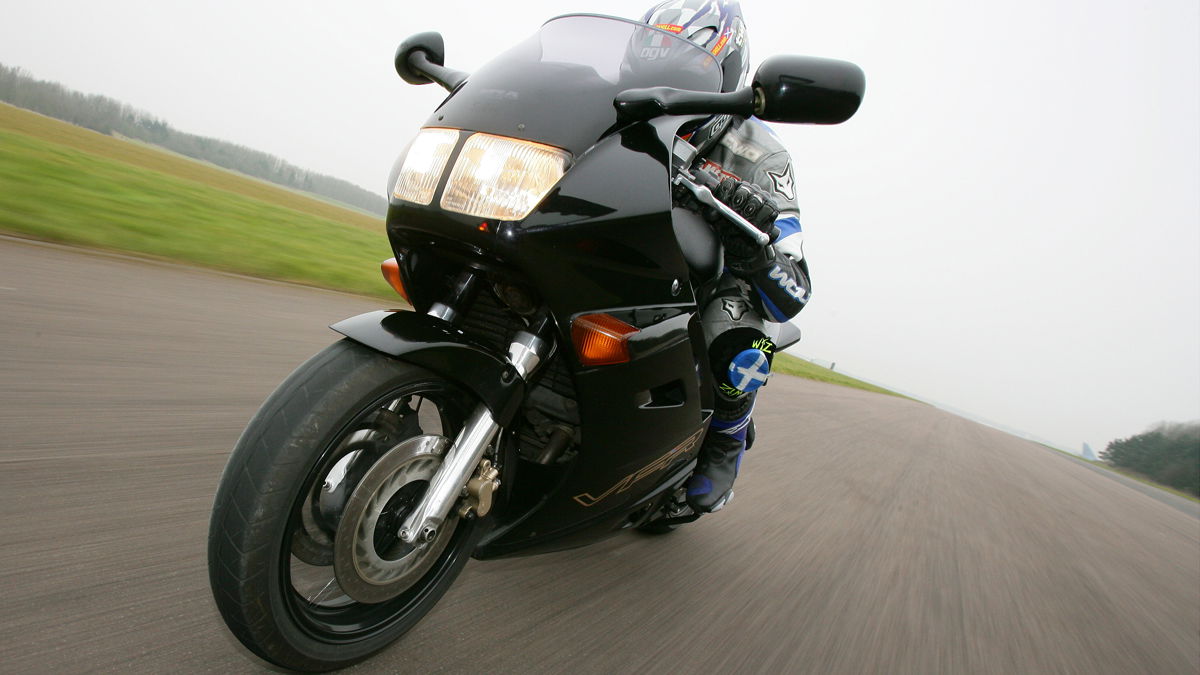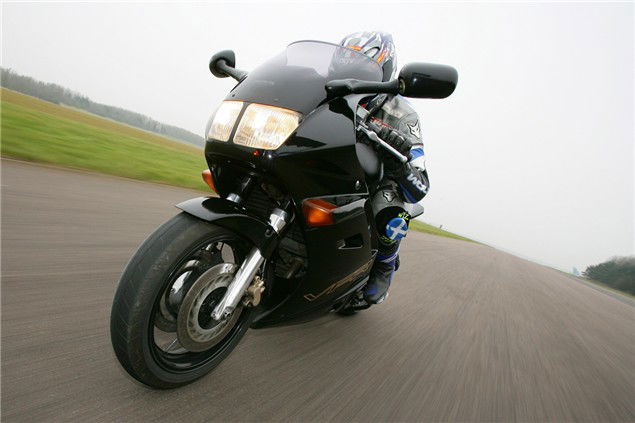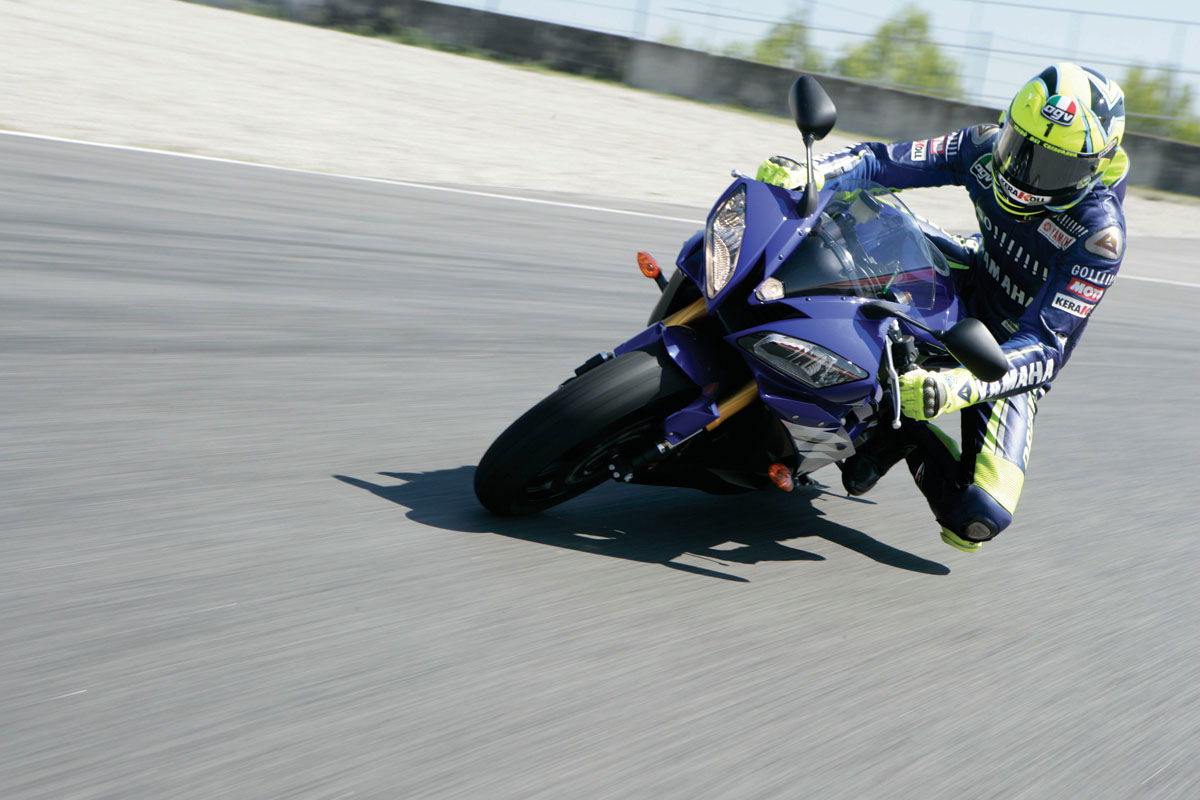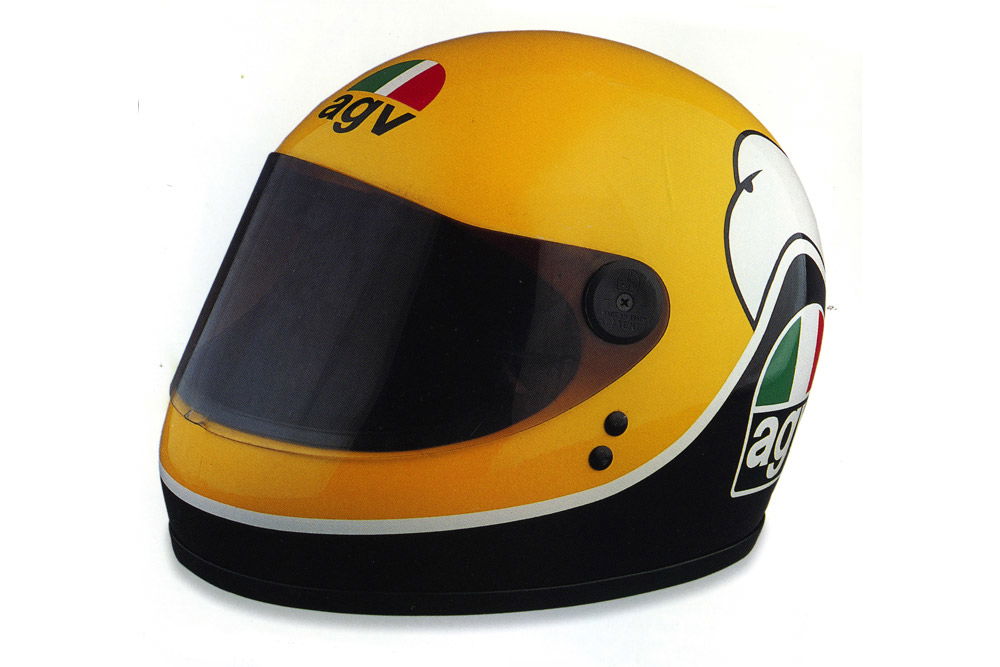The Honda VFR Story
Honda's VFR has stood for two decades as a machine which owners and press alike have claimed to be the world's most perfect motorcycle. Surprising, then, that the VFR story was almost over before it had begun


It's all very strange. Some argue the V4 is the perfect layout for a motorcycle powerplant. It's more compact and narrower than an inline four, it benefits from a shorter, stiffer camshaft and, with a 90-degree V-angle, it has perfect mechanical balance and therefore doesn't need any balancer shafts. Sure, placing all the ancillaries can be difficult, which also makes it a fiddle to work on and, despite water cooling, the rear bank of cylinders runs a little hot. Oh yes, and cost becomes an issue because you need to tool up for two lots of cylinder heads, barrels, camshafts, etc, but overall the V4 layout should be perfect for a motorcycle.
And yet if we wind back to the '80s (cue wobbly image and harp glissando) through the fug of petruli oil, pixie-boots and perms, we would see Honda desperately trying to recover from one of its biggest corporate failures with the first incarnations of its road-going V4s. And all this while fighting off the challenges of Yamaha, which was aggressively daring to match the Big H bike-for-bike in the marketplace.
As good as the V4 layout should be, making it work was another matter. In the early 1980s, if it was complex, costly and difficult, this meant it was perfect for Honda, who at the time had a penchant for building industrial strength jackhammers for cracking a peanut.
So while other manufacturers were still clinging onto air-cooling and two valves per cylinder, Honda was building machines like the VF400, VF500, VF750S, VF750F and VF1000. They signalled a brave new world for motorcycling with their anti-dive, inboard ventilated discs, Comstar wheels and liquid-cooled V4 engine layouts.
At the time, Honda's marketing men seemed intent on using the V4 to take over the world, but then came the 'chocolate camshaft' debacle. In early 1984, a substantial number of VF owners started complaining when their mechanical marvels' top-ends started going pop. Camshaft bearings were finally found to be the culprit, but Honda's image had taken an almighty battering. On the track the V4 was still the bike to beat, thanks to machines such as Honda's RVF racers, but on the road, customers' attitudes to any more Honda V4s cooled off distinctly.
That was until 1986, when Honda released its all-new gear-driven cam masterpiece: the VFR750FG.
At first, some were disappointed that this new 750 from Honda wasn't as racey as Suzuki's radical GSX-R750, or didn't have as many valves as Yamaha's FZ750, but beneath the sober white paintwork the first VFR was a real gem. Utilising gear as opposed to chain-driven cams - first seen on the mighty VF1000R - the VFR produced a claimed 105bhp at 10,500rpm and had a frame akin to a Honda factory racer. But despite the spec, compared with its peers in the then revitalised 750 class, the new VFR was the sensible option.
Notable beardy and now MotoGP commentator Julian Ryder was at the bike's launch in Jerez. He recalls: "'How did they do it for the money?' we asked. Mainly because they had to. Honda's V4 concept's cred was gone, the next one had to be good. We knew at once that it was good, although we were perplexed by the plain looks, and why wasn't it a race rep like the GSX-R or FZ? After the first road tests we knew it was very good. A year later we knew it was a classic. The '88 VFR with the 17-inch front wheel and faired-in indicators is still one of the greatest all-round motorcycles ever made. It had no weaknesses on the road."
Not everyone was so effusive in their praise. Tony Middlehurst was editor of SuperBike magazine and he selflessly admits that he took responsibility for all the best press trips, if little else. An invite to ride the new VFR750 fell squarely into this category. "Though it was touted as a sports bike," he says, "it struck me as too top heavy for serious scratching. You seemed a long way up, which meant it was a long way down. And that would have hurt because in '86 leathers were useless, bursting open at the slightest provocation or extra profiterole."
Either way, the VFR was a winner. Press and public reaction - and the performance of Ron Haslam on a stock bike during the '86 Transatlantic races - meant the bike would sell well.
With the '90 FL machine, the VFR was still a fairly sporty tool despite being heavier. Some of this was due to the adoption of the single-sided Pro-Arm. This came from Honda's Elf racing days and, while it hinted at sportier performance, the VFR750FL was most definitely a road-going machine. Albeit a supremely efficient one.

